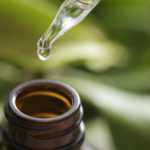Antioxidants

What are antioxidants?
Antioxidants are special class of micronutrients (the term “micronutrient” means that only miniscule amounts are required to provide essential support for vital metabolic functions). Antioxidants block harmful chemical reactions caused by oxidation – the destructive effect of oxygen and other oxidizing agents on the molecular components of cells. Vitamin C, vitamin E, selenium, and carotenoids are examples of antioxidants found naturally in many fruits and vegetables. Plants, which are foods high in antioxidants, are also rich in phytonutrients that act as antioxidants, including catechins, found in green tea; resveratrol, found in red wine; and curcumin found in turmeric. In addition to getting antioxidants in our diet, our body makes some of its own, such as coenzyme Q10.
Why are they necessary and what the benefits?
Oxidation refers to the process in which an atom or molecule loses electrons. It is an essential part of the conversion of food into energy, but can also be damaging, as it creates substances known as free radicals that can set off chain reactions that ultimately damage or kill cells. Consequently, plants and animals make use of a variety of antioxidants – compounds that inhibit oxidation by donating electrons to unstable atoms – to limit this damage. Cumulative damage due to oxidation probably accounts for many of the degenerative changes of aging and many age-related diseases. Incorporating antioxidant foods into the diet at a young age and continuing throughout life may help to promote general health and slow the development of several age-related diseases.
How much, and what kind does an adult need?
The term “antioxidant” covers a wide range of nutrients that can work via profoundly different mechanisms. For example, some may react directly with oxidized molecules in the cell, others may protect cells by binding and neutralizing oxidizing minerals in the blood. It is difficult to make blanket recommendations regarding appropriate intake levels of antioxidants from supplements, because requirements can vary widely depending upon age, gender, stress, genetics and more.
When it comes to antioxidant supplements, more is not necessarily better. Unless a health care provider recommends otherwise, most adults should limit their daily supplement intake of vitamin E to 100-200 IU (in the form of mixed tocopherols and tocotrienols), selenium to 100-200 mcg, and mixed carotenoids, including lycopene to 15,000 IU. Vitamin C is water soluble and quite safe even in large doses, but most people derive maximum benefit from taking 250-500 mg per day.
How much does a child need?
Dr. Weil recommends limiting antioxidant supplements to what is in a children’s multivitamin for children four and younger. Children between the ages of four and 12 should get no more than 50 percent of the adult recommendation for antioxidants. Children older than 13 should limit their upper intake to what Dr. Weil recommends for adults. It is important to talk to your child’s pediatrician before starting your child on antioxidant supplements.
How do you get enough antioxidants from foods?
For antioxidant foods, eating a wide variety of whole foods, especially fruits and vegetables such as tomatoes, watermelon, papayas, blueberries, carrots, and leafy greens, will provide a wide range of beneficial antioxidants. Regular consumption of green tea is also beneficial as it provides antioxidants known as catechins. However, it may not always be possible even for those who are conscientious about healthy eating to consume the optimum amounts of antioxidants on a daily basis. Consequently, Dr. Weil recommends taking a multivitamin that can fill in any gaps that might occur in the daily diet.
Are there any risks associated with consuming too much?
Consuming antioxidants at levels far higher than U.S. recommended daily allowance (RDA) specifications of the individual micronutrients is not recommended, as excessive dosages may have pro-oxidant effects. When taking antioxidants, especially if you’re taking several products and eat vitamin-fortified foods, be mindful of selenium – doses above 400 mcg a day may carry health risks, which is why the Institute of Medicine has set the upper limit at 400 mcg per day for adults from all sources.
Most Americans consume on average 108 mcg per day of selenium, which is why Dr. Weil recommends limiting supplementation to 100-200 mcg per day. Taking high doses of beta-carotene, a carotenoid, has been shown to increase the orange pigmentation of skin. This is not harmful and often disappears after reducing beta-carotene intake for a few days. However, smokers, former smokers, and those who are or have been exposed to asbestos may have an increased risk of lung cancer from supplementing with isolated beta-carotene. Dr. Weil does not recommend taking isolated beta-carotene as a supplement; instead, he recommends a using a product that provides mixed carotenoids, including beta-carotene.
Are there any other special considerations?
- It is best to take antioxidant-containing supplements with meals to enhance absorption and to reduce the risk of an upset stomach.
- Selenium and vitamin E facilitate each other’s absorption and it is recommended to take them together in a multivitamin.
- Chocolate also contains antioxidants (polyphenols) similar to those found in red wine and green tea. Dr. Weil recommends high quality dark chocolate that consists of at least 70 percent cocoa solids; eat an ounce or so of these foods high in antioxidants a few times a week.
Strive for a variety of colorful fruits and vegetables in your diet, because varied colors indicate a healthful variety of antioxidants. For example, red fruits and vegetables are rich in a powerful antioxidant known as lycopene; orange and yellow varieties contain abundant beta-carotene; blue and purple produce is typically an excellent source of lutein and zeaxanthin, and so on.
Updated by: Andrew Weil, M.D., and Tieraona Low Dog, M.D., on February 14th, 2014.









